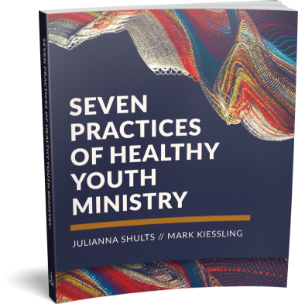Counter-Cultural Thankfulness
Download this Word One Study for Thanksgiving, Lectionary Series A
Text: Luke 17:11-19 for Thanksgiving Day, Lectionary Series A
Objective
Participants will:
- Understand the healing power of faith in Jesus in our lives.
- Understand the impact of thankfulness on our faith and relationships.
- Desire to express thankfulness for the love of Jesus through service directed to others God places in our lives.
Materials Needed
Bible
Lutheran Service Book
Paper Pencil/Pen
Group Guidelines
Divide class into groups of four to six. Have each group select as leaders the person whose birthday is closest to today. The leader’s purpose is to keep the group moving through the Bible study and to encourage the participation of all members.
Building Community
- Thanksgiving comes with many family traditions. Have members of the group share some of their favorite Thanksgiving traditions.
- Discuss as a group how these traditions make them feel about their family’s celebration of Thanksgiving.
- Finally, share with one another what they are thankful for this year.
Looking at God’s Word
- Have a volunteer from the class read Luke 17:11-19. Ask a couple of students to explain in their own words what happened when Jesus healed the ten lepers.
- Only one of the ten lepers returned to thank Jesus for healing them. In v. 17-18, Jesus asks “Were not ten cleansed? Where are the nine? Was no one found to return and give praise to God except this foreigner?” Why do you think it might have been difficult for the one leper to return and give thanks to Jesus for being healed on his own?
It may be helpful to remember that most Jews saw Samaritans as outsiders and avoided them. So as a Samaritan leper, he was doubly ostracized. Where the others rushed to the priests as prescribed by thee Levitical law, this leper saw something important in the person of Jesus and what He was here to do.
- Jesus notes in v. 19, that it was the faith of the leper that made him well. How was this the case for all ten lepers even though not all returned to give thanks?
It was not as though the other ten lepers were not thankful, but the one leper recognized something bigger about Jesus and who He was. The Samaritan leper saw Jesus as the one who could take away his sins.
- When the ten lepers cried out to Jesus the demonstrated their faith in that the trusted Him to heal them. Now, one leper returns to give Jesus thanks. What more might this leper be ready to trust Jesus for that perhaps the other nine lepers may have neglected?
Reinforcing What Has Been Learned
- In the business of daily life, we do not often pause long enough to really consider all the things that we might have to be thankful for. Have the group read Psalm 67 and discuss what universal themes of thankfulness apply just as much today as they did when the psalm was written for worship in ancient Israel.
- Hand out paper and pencils/pens to the group and given them time on their own to re-write Psalm 67 in contemporary language as a prayer of thanksgiving that would apply to our world, our nation, as well as their local setting and personal lives.
Closing
Have a volunteer, or two, from the class read their prayer on behalf of the class. End the session by singing, “Now Thank We All Our God” (LSB 895).









0 Comments